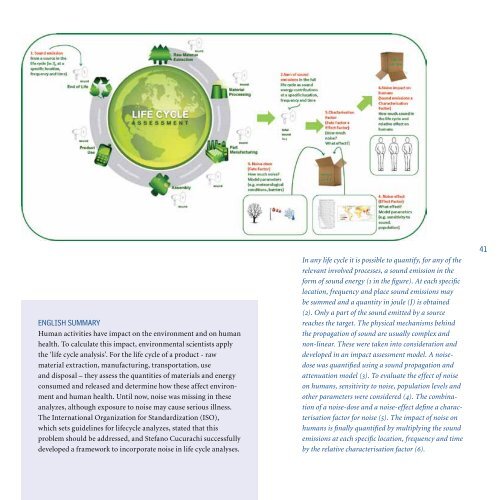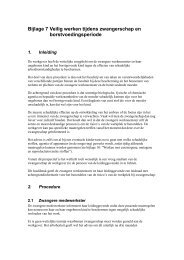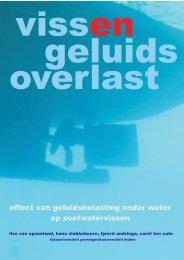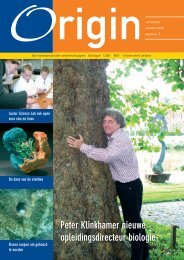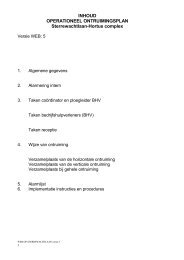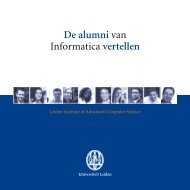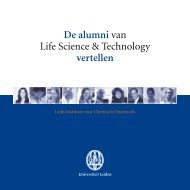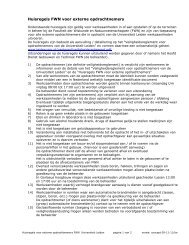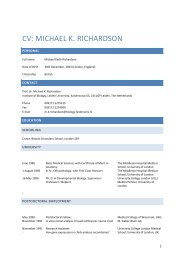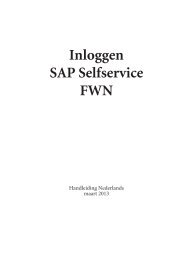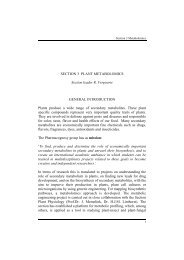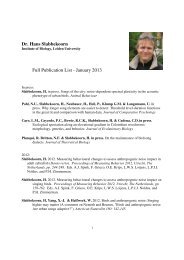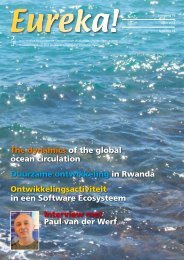Waar wij trots op zijn - Ontdekker van het jaar - Universiteit Leiden
Waar wij trots op zijn - Ontdekker van het jaar - Universiteit Leiden
Waar wij trots op zijn - Ontdekker van het jaar - Universiteit Leiden
Create successful ePaper yourself
Turn your PDF publications into a flip-book with our unique Google optimized e-Paper software.
English summary<br />
Human activities have impact on the environment and on human<br />
health. To calculate this impact, environmental scientists apply<br />
the ‘life cycle analysis’. For the life cycle of a product - raw<br />
material extraction, manufacturing, transportation, use<br />
and disposal – they assess the quantities of materials and energy<br />
consumed and released and determine how these affect environment<br />
and human health. Until now, noise was missing in these<br />
analyzes, although exposure to noise may cause serious illness.<br />
The International Organization for Standardization (ISO),<br />
which sets guidelines for lifecycle analyzes, stated that this<br />
problem should be addressed, and Stefano Cucurachi successfully<br />
devel<strong>op</strong>ed a framework to incorporate noise in life cycle analyses.<br />
In any life cycle it is possible to quantify, for any of the<br />
rele<strong>van</strong>t involved processes, a sound emission in the<br />
form of sound energy (1 in the figure). At each specific<br />
location, frequency and place sound emissions may<br />
be summed and a quantity in joule (J) is obtained<br />
(2). Only a part of the sound emitted by a source<br />
reaches the target. The physical mechanisms behind<br />
the pr<strong>op</strong>agation of sound are usually complex and<br />
non-linear. These were taken into consideration and<br />
devel<strong>op</strong>ed in an impact assessment model. A noisedose<br />
was quantified using a sound pr<strong>op</strong>agation and<br />
attenuation model (3). To evaluate the effect of noise<br />
on humans, sensitivity to noise, p<strong>op</strong>ulation levels and<br />
other parameters were considered (4). The combination<br />
of a noise-dose and a noise-effect define a characterisation<br />
factor for noise (5). The impact of noise on<br />
humans is finally quantified by multiplying the sound<br />
emissions at each specific location, frequency and time<br />
by the relative characterisation factor (6).<br />
41


